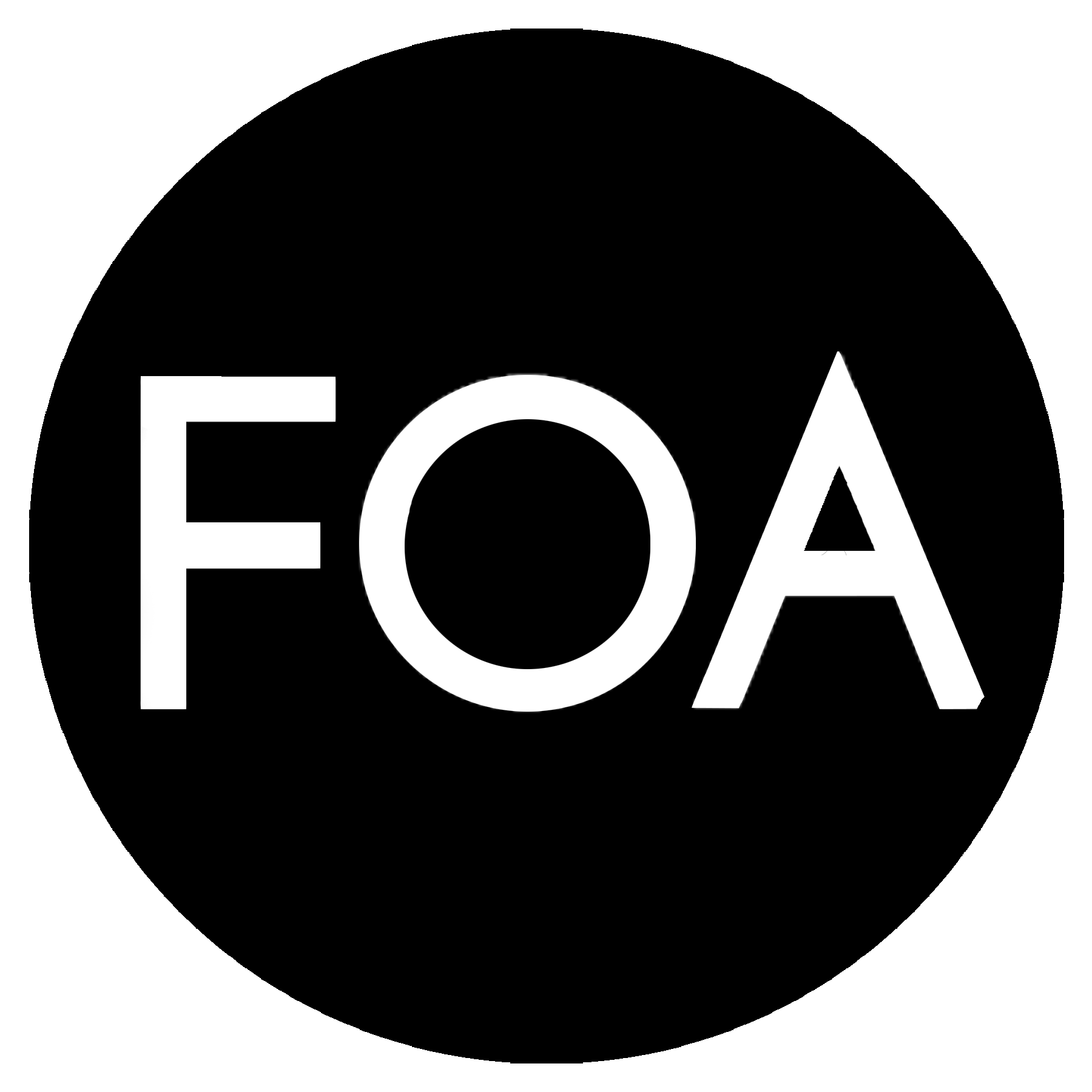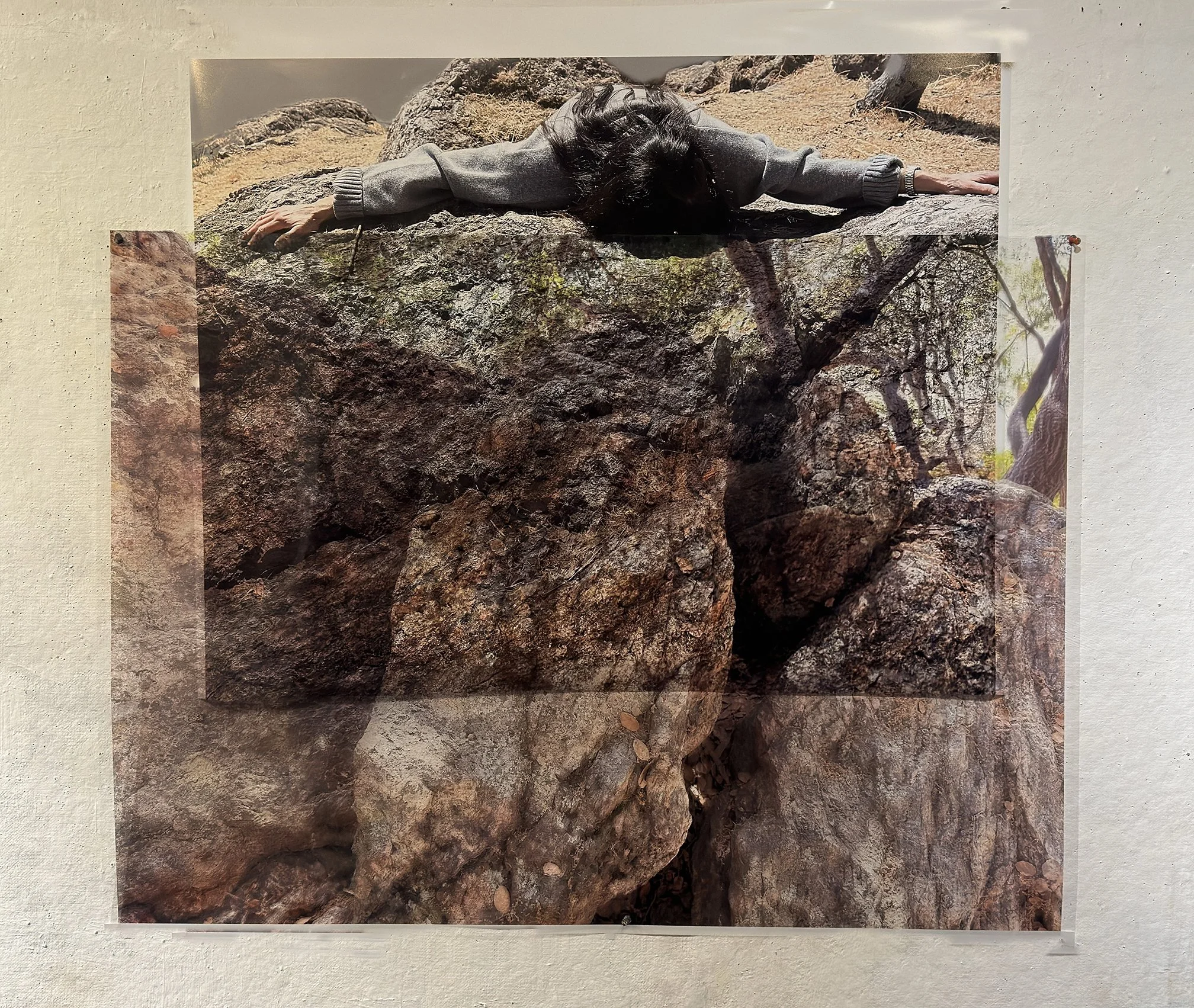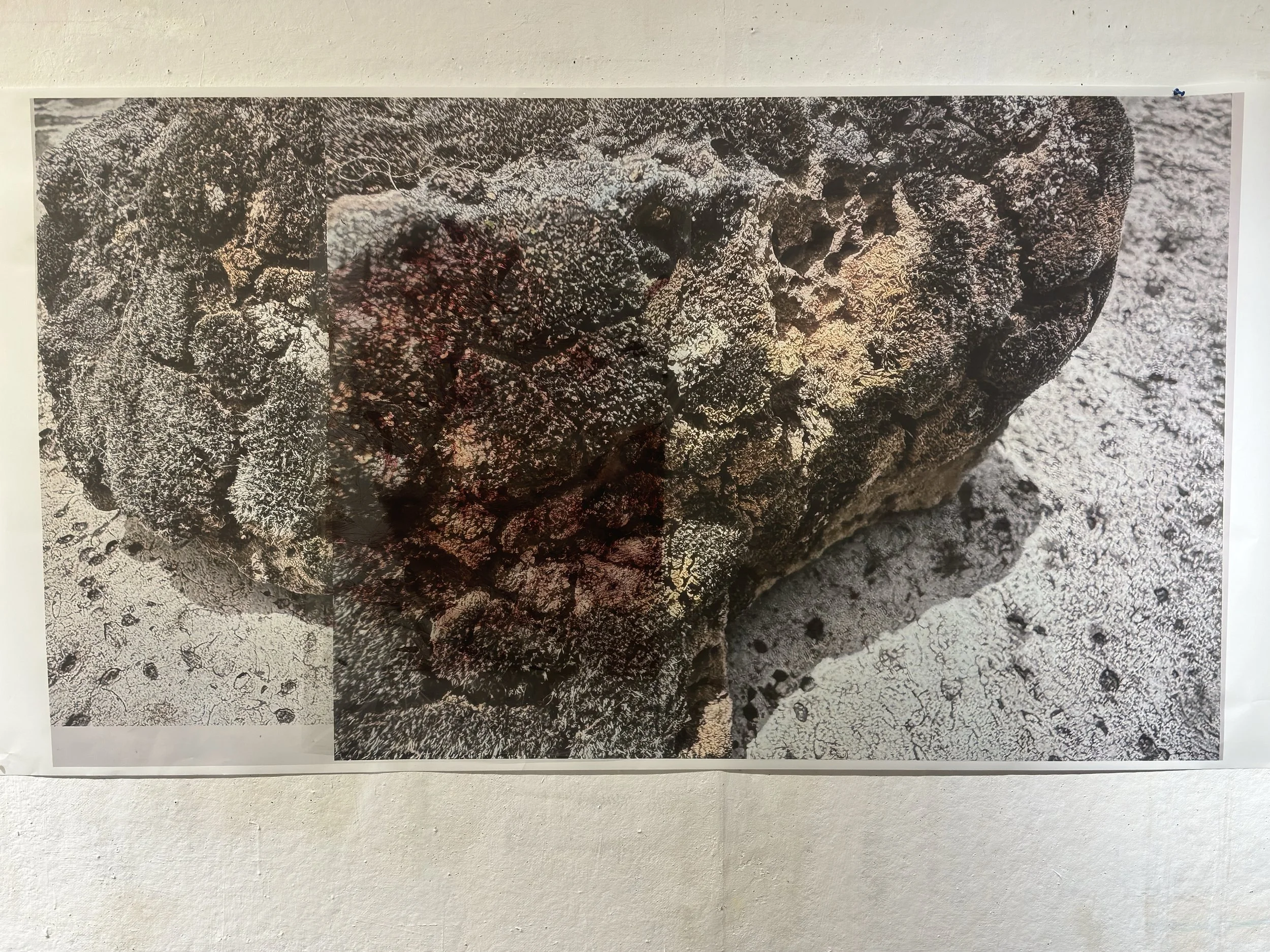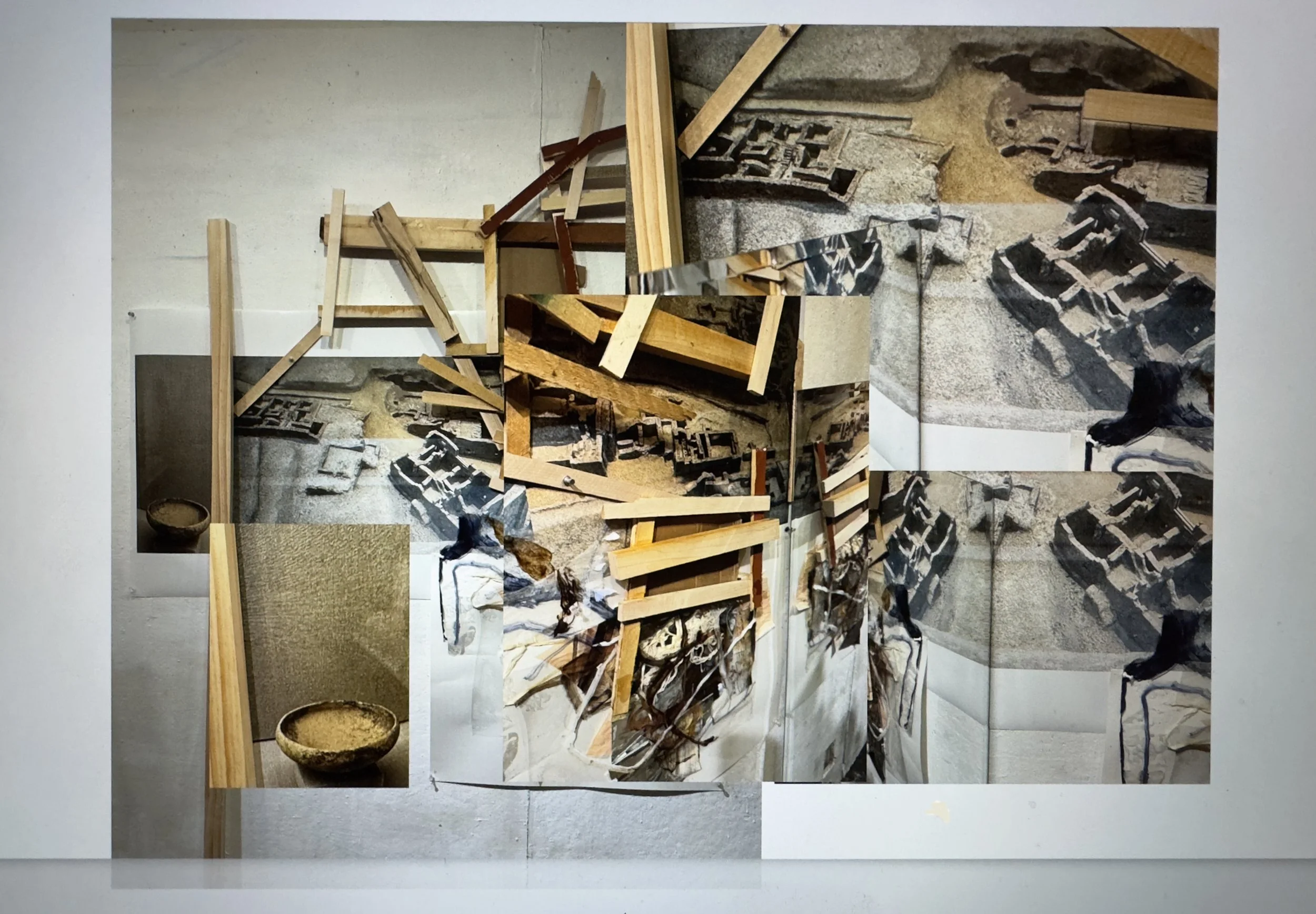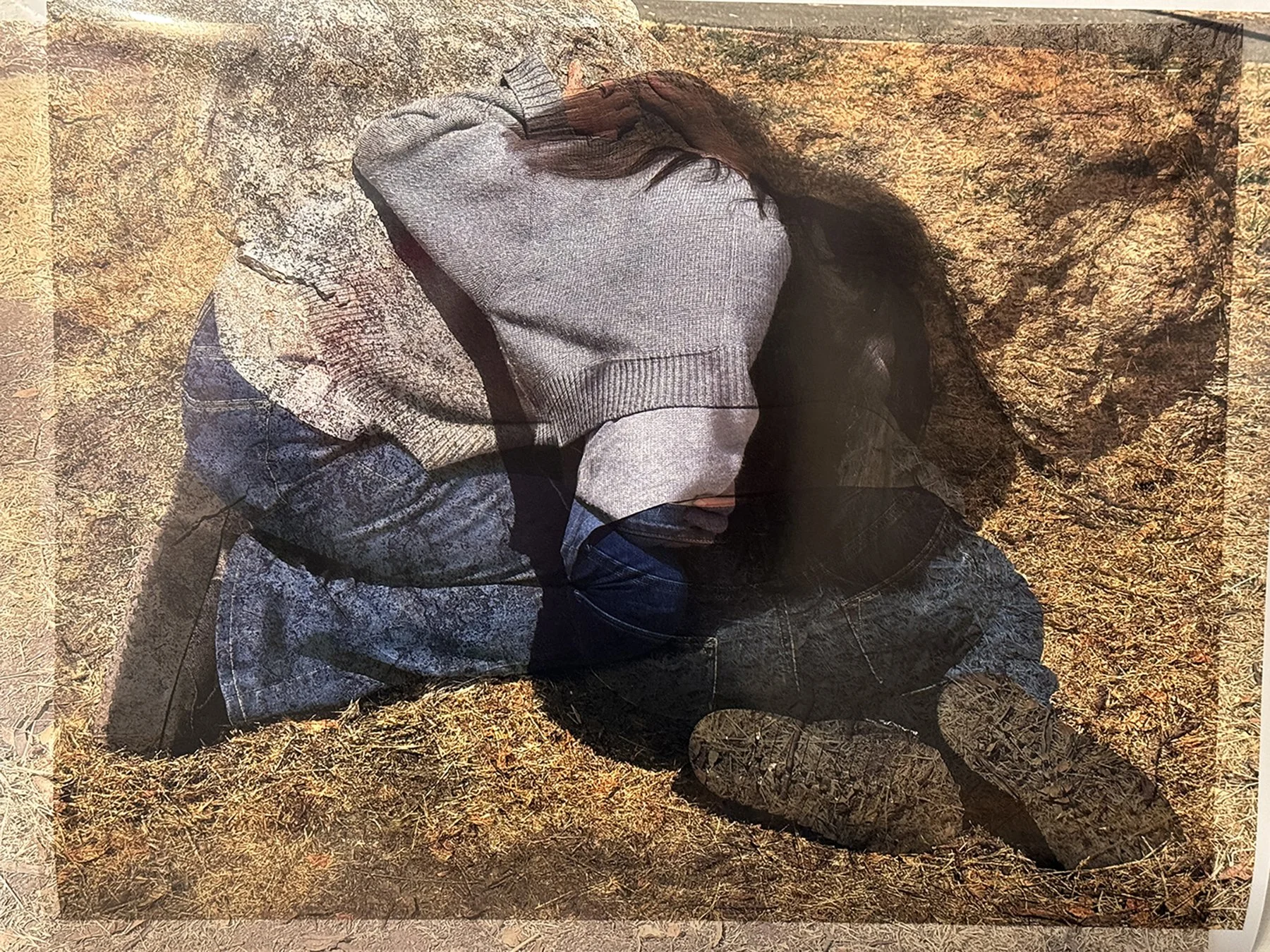Interview with Randy Jayne Rosenberg
Randy Jayne Rosenberg
California-based Randy Jayne Rosenberg addresses timely content-driven themes in both her art practice and her curatorial work. As a curator, she has produced collections and numerous exhibitions for The World Bank; the United Nations; the Dalai Lama Foundation and the nonprofit, Art Works for Change.
As an exhibiting artist since 1998, with the same intentionality as her curatorial work--focusing on social and environmental issues-- she has pivoted her attention full-time to her own art-making in the last five years.
In the past year, her group exhibitions include Lichtundfire Gallery and M.David & Co in NYC; Janette Kennedy Gallery in Dallas, Texas; and Epperson Gallery in Crockett, CA. She has participated in the Upstate Art Weekend (UPAW) 2023, creating the large-scale installation titled Stories of the Post-Natural World exhibited at Judy Pfaff’s Hudson River Valley compound; and UPAW 2024 in collaboration with Mary Mattingly, and Belen Milan to create The Wave, a 40 x 50 foot installation hosted at the Rhinebeck Methodist Church to address fast fashion and plastic pollution.
In 2022, she was selected to participate in the Master Artist program with Shazia Sikander and Holly Hughes at Anderson Ranch, CO. She has been awarded fellowships at Loft Nota Bene, Cadaques, Spain; the Artists Museum, Lodz, Poland; the Temporary4Here Turin Arts Festival, Italy; and has attended residency programs at Centre Pompadour: Neo-Feminism Lab, Ercourt, France; Truro Center for the Arts, MA; and the Atlantic Center for the Arts, Florida. She has been invited to participate in the Cycladic Arts Residency, Greece in 2025.
Website
INTERVIEW WITH RANDY JAYNE ROSENBERG BY LAURA DAY WEBB
What first drew you to the art world and when did you know this was the career you would pursue?
As a child, I liked creating things and using my hands, whether making clothing for my dolls or sculpting objects from mud. I used whatever materials I could find in my rural Upstate New York neighborhood. Early on, my interests were cemented in the creative and visual world.
I grew up in a household with parents influenced by the Depression and WWII. Though art was valued, pursuing art professionally was viewed as an indulgence. I was encouraged to follow a line of work that was considered “socially responsible.”
My first vocation was in art therapy, using art within psychiatric facilities. When I became financially self-sufficient and accountable to only myself, I went back to school for an MFA in painting. Although my working life had morphed into curatorial work by that time — first building a contemporary art collection for the World Bank and, later, founding my own nonprofit, Art Works for Change — I loved being in the arts. I felt fulfilled and creative in the curatorial role and found opportunities to put my art therapy background to use as a lens to create world-traveling contemporary art exhibitions. While I have been painting for more than 30 years and have had my work included in both group and solo shows, only in the last 5 years have I pivoted to making art full-time.
Your multi-disciplinary practice focuses on the natural world. How do you synthesize this connection into your works?
Growing up, the woods near my home were my playground as well as my hideaway and sanctuary.
Today, I consider the natural world as my practice.
My daily childhood play, entangled in and with vines, trees, insects, animals, led me to appreciate that there is no true distinction between “us” and “nature” — we are all part of the same web. In my artwork, I use the organic environment as a metaphor for emotional and psychological states that tell stories about belonging, rooting and grounding. Line, which is prominent in my art, is the ultimate connector, much as it is seen throughout nature, such as in the roots of trees, mycelium networks, rock crevices and protective canopies.
Those lines also connect us to the natural world in ways that root and ground us. I believe that when we lose connection to nature, we lose connection to ourselves.
I try to synthesize sometimes-disparate elements into an organic whole by combining painting, photography, assemblage and installation. I incorporate natural materials such as straw, earth, bamboo, clay and plant roots as references for temporality and the cycles of life, death, decay and rebirth. I use lead and rubber to reflect malleability, strength and resilience. They are dense materials, yet pliable and adaptable. As plastics increasingly accumulate in our environment, I have been exploring how the natural and artificial worlds comingling, often to the detriment of humanity and other living things.
I try not to make my work too precious, using a process of constructing and deconstructing the work to make way for the possibility of new and unexpected images to come forth — such as a figure enmeshed in the environment. Those discoveries are part of what brings me joy.
You have a new series, "The Rock" that explores the photographic medium in a different manner than some of your mixed media works. What inspired you to pursue this subject matter and capture it in a different light?
The Rock series was inspired when I visited a stone supplier looking for garden rocks. I fell in love with a small volcanic rock covered in black moss. To me, it was a microcosm of a world that I could hold in my hand.
As I thought about that rock, I unconsciously and continuously found myself singing Nina Simone's “Sinnerman” in my head: "I run to the Rock, Hide me Rock, Don't you see I need you Rock." This song of brokenness and the desire for redemption and hope made its way into my consciousness and influenced this body of work.
In the large-scale multi-media work that resulted, I have explored textural surfaces and the layering of translucent films and paint placed over the photographic work. The series led me to experiment with a performative aspect, using my body within the artwork. This was something new and slightly uncomfortable for me, but I found myself compelled to explore it.
What prompted this move into photography was in part a desire to combine abstract and representational imagery. I also liked that photography offered a way to portray histories — of time, decay and growth, for example — through translucent layers of paint and film.
What advice would you give to aspiring artists?
In a word: Perseverance. Just stay with it and follow your heart and authenticity in the work — explore what is real to you. Find the joy in the art-making process. It took me a long time to get to that point.
If you could study with an artist past or present, who would it be?
There are so many, it is hard to pick. As my work has evolved, so have my influences.
That said, I am intrigued how Judy Pfaff’s and Phyllida Barlow’s installation work has influenced such artists as Jessica Stockholder and Sarah Sze, all utilizing a painting vocabulary that becomes more dimensional. Similarly, though I have pursued three-dimensional works, I too consider myself a coming from a painting tradition and not a sculptor.
Photographically, I love looking at the work of the South African photographer Robin Rhodes and the German artist Rebecca Horn, and how they use still images and the human figure to create performance art.
Randy Jayne Rosenberg
Calming the Rumble, 2024
Performative Photography, 43 x 48 inches
Randy Jayne Rosenberg
Brain Stem Senses, 2024
Photography, 36 x 76 inches
Randy Jayne Rosenberg
Past/Present, 2024
Photo-compilation, 36 x 45 inches
Randy Jayne Rosenberg
Hide Me Rock, 2024
Performative Photography, 22 x 28 inches
